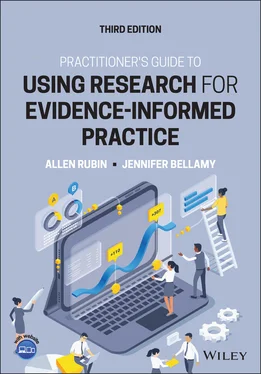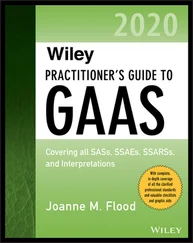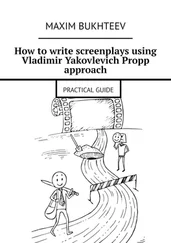Obtain training or consultation. After reading about the intervention, you might realize that you need to attend a continuing education workshop or professional conference providing training in it. Perhaps you can arrange to take an elective course on it at a nearby professional school or access one of the online or virtual trainings that are becoming increasingly available. Once you feel ready to start implementing the intervention, you should try to arrange for consultation or supervision from a colleague who has greater expertise and experience in providing that intervention. For some interventions, you can receive consultations directly from the intervention developers or earn a certification to deliver the intervention, although this can be costly in some cases. You might also be able to join or organize a support group of colleagues who are using the intervention, who meet regularly to discuss their experiences with it, and who can give you feedback about how you are implementing it. You can also look for interventions that use a “train the trainer” model, so that you or your colleagues can train others in the intervention as a strategy to build training capacity and reduce training costs.
If you implement such interventions having received less training than the clinicians in the study received, you might be less effective than they were. Not all desired interventions require such extensive training and supervision. With those that do, however, you have several options, as follows:
One option is to find a practitioner or agency that is well prepared to provide the intervention and refer the client there.
If that option is not feasible, an alternative would be to learn how to provide the intervention yourself as best you can, and then make sure you implement Step 5 of the EIP process carefully – in which you monitor client progress. Be prepared to alter the treatment plan if the client is not making the desired progress and you do not appear to be as effective as you had hoped to be. At that point, you might switch to an intervention that has been supported by some credible evidence and in which you are more skilled and experienced.
Of course, a third option would be to have provided the latter intervention in the first place, particularly if you are unable to learn enough about the new intervention to reach a comfort level in providing it. Implementing Step 5 will still be important even with interventions with which you are more comfortable. Your comfort level does not guarantee effectiveness.
One more long range option bears mentioning. You can try to educate policymakers who fund community programs about the cost savings over time for the most effective interventions that have steeper up-front costs. Franklin and Hopson point out:
Researchers have shown, however, that adopting some costly evidence-based practices ultimately saves money because they can prevent the even more costly consequences of going without treatment. Multisystemic therapy, for example, may save money for communities by preventing incarceration and residential treatment for adolescents who use drugs (Schoenwald et al., 1996). Other researchers demonstrate that the benefits of evidence-based practices outweigh the costs in cost-benefit analyses (Chisholm et al., 2004).
Despite the feasibility obstacles that you might encounter in the EIP process, it is hard to justify not doing the best you can to implement it, even if that involves some of the shortcuts we've discussed. After all, the alternative would be to practice in utter disregard of the evidence, which would not be ethical or compassionate. Thus, we hope this chapter has whetted your appetite for EIP and for reading the rest of this book to learn more about how to utilize research in the EIP process.
2.7 But What about the Dodo Bird Verdict?
We have noted that some studies have found that one of the most important factors influencing service effectiveness is the quality of the practitioner-client relationship. We also noted that some studies have concluded that the quality of the practitioner's clinical relationship skills has more influence on treatment outcome than the decisions made about what intervention to employ. Some have taken a more extreme position and argued that the choice of intervention is irrelevant because some studies have found that all interventions are equally effective if the practitioner providing them has good relationship skills (Wampold, 2001). Based on the latter studies, some scholars have criticized EIP and depicted it as a waste of time at best, and perhaps even harmful if practitioners just follow an intervention manual and thus ignore their relationship skills. Their argument is known as the dodo bird verdict, based on the dodo bird's declaration after a race in Alice in Wonderland that “Everyone has won, and all must have prizes” (Luborsky et al., 1975).
TABLE 2.3 Internet Sites for Reviews and Practice Guidelines
| Organization |
Internet site |
| American Psychological Association (empirically supported treatments) |
http://www.apa.org/divisions/div12/rev_est |
| BMG Clinical Evidence |
http://www.clinicalevidence.com/ceweb/conditions/index.jsp |
| California Evidence-Based Clearinghouse for Child Welfare |
http://www.cachildwelfareclearinghouse.org |
| Campbell Collaboration |
http://www.campbellcollaboration.org/index.html |
| Cochrane Collaboration |
http://www.cochrane.org |
| Center for Substance Abuse Prevention |
http://modelprograms.samhsa.gov/templatecfm?page=default |
| Crisis Intervention, Comorbidity Assessment, Domestic Violence Intervention, and Suicide Prevention Network |
http://www.crisisinterventionnetwork.com |
| Department of Health and Human Services: Agency for Healthcare Research and Quality Evidence-Based Practice |
http://www.ahcpr.gov/clinic/epcix.htm |
| The Evidence-Based Program Database |
http://www.alted-mh.org/EIPd |
| Evidence Network (United Kingdom) |
http://www.evidencenetwork.org/home.asp |
| Expert Consensus Guidelines Series |
http://www.psychguides.com |
| National Center for Posttraumatic Stress Disorder |
www.ncptsd.va.gov/publications/cq/v5/n4/keane.html |
| National Guidelines Clearinghouse (Department of Health and Human Services) |
http://www.guidelines.gov |
| Office of Juvenile Justice and Delinquency Prevention Model Programs Guide |
http://www.dsgonline.com/mpg2.5/mpg_index.htm |
| Oregon Evidence-Based Practice Center |
http://www.ohsu.edu/epc |
| Substance Abuse and Mental Health Services Administration National Registry of Evidence-Based Programs and Practices |
http://www.nrepp.samhsa.gov/find.asp |
There are, however, a number of counterpoints to be made to their argument. One, of course, is that – as we noted earlier – EIP questions are not just about intervention effectiveness and are not just at the clinical level of practice. Another counterpoint, also noted earlier, is that other studies have not shared the dodo bird conclusions. Some have found the choice of intervention to have a greater impact on outcome than do relationship skills. The same authors have noted methodological flaws in the studies supporting the dodo bird verdict (Beutler, 2002; Craighead et al., 2005; Lilienfeld, 2007). Moreover, some studies that have concluded that relationship factors are more important have nonetheless found that while the choice of intervention might be less important, it is not unimportant. In light of those studies, one can argue that even if relationship factors are important it is a false dichotomy to conclude that relationship factors are all that matter. Why not work to maximize the benefit of both types of factors?
Читать дальше












